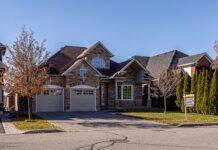 Construction of apartment buildings in September hit the highest monthly pace since the beginning of 2006, while construction of single-family homes and condominiums remained basically flat, according to Freddie Mac's U.S. Economic and Housing Market Outlook.
Construction of apartment buildings in September hit the highest monthly pace since the beginning of 2006, while construction of single-family homes and condominiums remained basically flat, according to Freddie Mac's U.S. Economic and Housing Market Outlook.
In fact, for now, the construction of new apartments is driving the multifamily sector. Construction of condominium complexes is ‘scant,’ at least in comparison to 2006, and single-family construction is just ‘chugging along,’ Freddie Mac reports.
And demand for apartments has never been stronger: According to the U.S. Census Bureau, the latest three-month and six-month absorption rates for apartments had risen to 64% and 83%, respectively. Absorption rates for unsubsidized, unfurnished, newly built apartments are now rising at the fastest pace in a decade, Freddie Mac reports. In fact, over the past four quarters, all the growth in net household formations has been among renters.
Meanwhile, the demand has pushed vacancy rates down to the lowest level since 2000.
As is to be expected, the decline in the homeownership rates has been primarily concentrated among younger households. For example, for those 35 years and younger, the homeownership rate has fallen from 43.6% to 35.9% over the past decade, Freddie Mac says.
‘The apartment market has been vibrant, reflecting the desire of many Millennials to live in an urban setting and retain locational flexibility,’ says Frank Nothaft, vice president and chief economist for Freddie Mac, in a release. ‘Unfortunately, if they're looking to live in the larger cities, that's where rents are rising the fastest, especially in the West or Northeast regions of the U.S., places like Los Angeles and New York City. In the South region, areas like Miami and the Washington-Baltimore metro have seen real rents exceed the U.S. average. But in the Midwest, only the Chicago metro area has outstripped the U.S. average.’
In August, the U.S. Census Bureau reported that housing starts jumped in July compared to June to reach the highest level in eight months. The seasonally adjusted annual rate of about 1.1 million units was 15.7% above the revised June estimate of 945,000 units and 21.7% above the July 2013 rate of 898,000 units.
But most of that growth came in the multifamiliy sector – most of it in the form of increased construction of apartment buildings: Single-family housing starts in July were at an annual rate of 656,000 units – up about 8% from 606,000 units in June. But the annual rate for units in buildings with five units or more was 423,000 units – up nearly 33% from 318,000 units in June.










